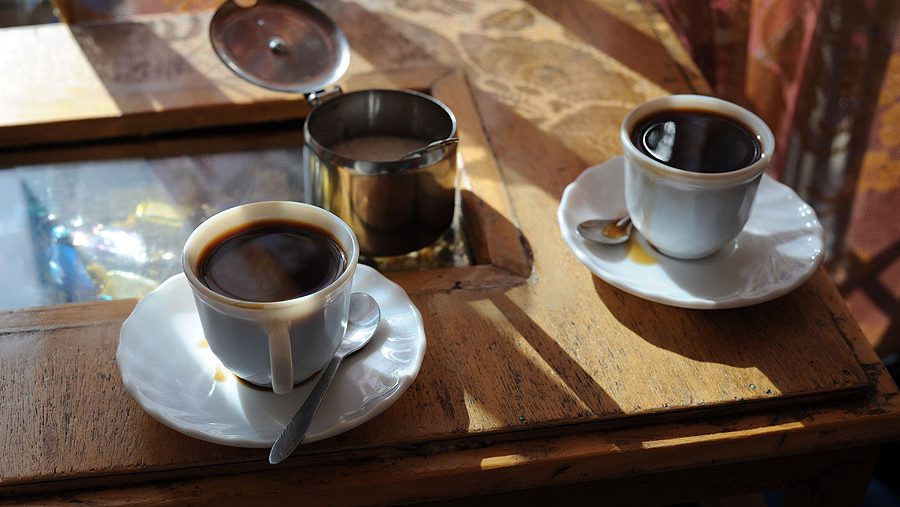When I was having lunch with a friend, I ordered my usual, a double espresso, and – horror of horrors – it was decaf.
“Can I bully you a little bit?”
“For?”
“Drinking a decaf double espresso. People usually drink it for a hit of energy, you know? What’s the point?”
The reasoning, dear reader, is simple: I have an anxiety disorder. If I drink caffeine these days, I begin to resemble Eeyore with a nasty coke habit, which isn’t a great look. The longer answer is that, during my year abroad, I discovered the staff room coffee machine at the school where I was teaching, and became eager to pick up a cup of coffee at every opportunity. At the same time, I was driven towards attempting Lent in earnest for the first time in my life, giving up caffeinated coffee and trying to cut my reliance on caffeine to wake me up in time to teach at 8am. I realised after Lent that I had a lot more energy throughout the day, whereas before, I would crash in the afternoon, and awaken myself with another dose. I had become one of those mythical creatures who could just summon energy from within themselves, rather than from a mere stimulant.
Back in Oxford, this has proven particularly helpful. Caffeine, you see, has some undesirable knock-on effects: it has a half-life of six hours and disrupts the sleep-wake cycle through blocking certain neurotransmitters. Without it, I sleep full nights, and write essays fuelled by water and tea, rather than oscillating between writing and lethargy. I was worried that it would mean saying goodbye to the rich, deep, full-bodied flavour of regular coffee – a tragedy, really, having already lost the regular jolts of energy. It doesn’t have to be this way, though.
So, in order to direct the decaf-curious to the best spots, I have donned my food critic cap and tried out my usual order at several Oxford establishments:
Taylor’s
Taylor’s came in at £3, which set high hopes for its quality. However, although my grandmother considered Illy-brand coffee up the gold standard, this espresso fell short of expectations. Whilst it had a sweet-ish scent and a delightful rounded and warming flavour, I could tell that the usual vigorous hit of a double espresso had been lost in the decaffeination process. Not worth the £3, I’m afraid.
The Schwarzman Centre
A fellow member of Magdalen MCR recommended the coffee at the new Humanities Centre to me, so here are my thoughts. The price is not extortionate: £2.75, it’s not bad value for money. The espresso had an inoffensive flavour profile which lacked intrigue, though with a fullness to it which the espresso from Taylor’s did not. The acidity was gentle rather than overpowering. A slight gust of wheatiness could be detected in its scent. All in all, not a bad shout if you’re looking for a coffee break between pomodoro shifts in the library above.
ItaliAmo
When I used to live on Longwall Street, I would march out of my room, furious at a botched essay, and take to ItaliAmo for a double espresso. On certain days, they offer a student discount, so you may be able to get a double espresso for as little as £1.98 (usually it stands at £2.20). ItaliAmo’s decaf coffee was warm and nonthreatening, with a slight scent of cinnamon. However, its downfall is in its weakness. This was the coffee which I felt was most detectably decaffeinated. Very much worth the price, but pay a few pence more elsewhere and a slightly better experience may await you.
Jericho Coffee Traders
Jericho Coffee Traders also hits the £3 mark for an espresso. But since they’re an independent cafe, and that use of a reusable cup gives you 20p off, I will cut them some slack on the price. The espresso here was akin to that at the Schwarzman, sharing its boldness and slight wheatiness, but with JCT’s coffee, the crema was thick and not much flavour seemed to have been lost in the decaffeination process. A strong contender.
Chickpea
More of a lunch spot, but one could easily pop in for a cake and a coffee. At £2.40, the double espresso was impressive value for money. On first whiff, I detected a gentle nuttiness, and a subtle hint of cherry in the first few sips. The flavour was bold and, yes, acidic, but without being coarse or insufferable – in fact, it went down smoothly. I was also impressed by the thickness of the crema. Go! Now!
So, although you might be judged by those around you for making the (arguably necessary) switch to decaf, now you can go and pick up your fake espresso in the comfortable knowledge that you’re not compromising on flavour or experience – which are some of the main joys of drinking coffee, anyway.


